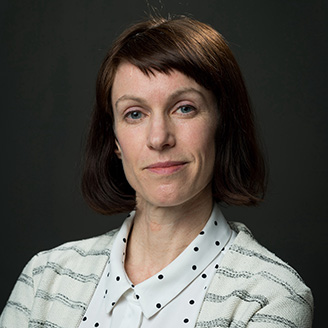
Nichola Hill
617.287.6675
Biography
I am an ecologist who studies how diseases emerge from animal reservoirs in an increasingly man-made world (ie. the Anthropocene). Depending on the day, you can call me a disease ecologist, virologist, field biologist, or even a bird nerd. I particularly love studying viruses. Viruses evolve rapidly (much faster than cellular-life forms) so they make an excellent study system for testing theories of ecology and evolution.
Area of Expertise
Emerging Infectious Disease, Viruses, Evolution, Animal Ecology, Global Health, Bioinformatics, Field Ecology
Degrees
PhD, Biology. Macquarie University – Sydney, Australia (2009).
BSc (Hons), Ecology. University of New South Wales – Sydney, Australia (2002).
Professional Publications & Contributions
- Ecological divergence of wild birds drives avian influenza spillover and global spread. Hill, N. J.; Bishop, M. A.; Trovao, N. S.; Ineson, K. M.; Schaefer, A. L.; Puryear, W. B.; Zhou, K.; Foss, A. D.; Clark, D. E.; MacKenzie, K. G.; Gass; Borkenhagen, L. K.; Hall, J. S.; and Runstadler, J. A. PLoS Pathogens, 18(5): e1010062. May 2022.
- Highly pathogenic avian influenza is an emerging disease threat to wild birds in North America. Ramey, A. M.; Hill, N.; Deliberto, T.; Gibbs, S.; Hopkins, M.; Lang, A.; Poulson, R.; Prosser, D.; Sleeman, J.; Stallknecht, D.; and Wan, X. Journal of Wildlife Management, 1–21. January 2022.
- Host barriers to SARS-CoV-2 demonstrated by ferrets in a high-exposure domestic setting. Sawatzki, K.; Hill, N. J.; Puryear, W. B.; Foss, A. D.; Stone, J. J.; and Runstadler, J. A. Proc Natl Acad Sci USA, 118(18). May 2021.
- Longitudinal analysis of pinnipeds in the northwest Atlantic provides insights on endemic circulation of phocine distemper virus. Puryear, W.; Sawatzki, K.; Bogomolni, A.; Hill, N.; Foss, A.; Stokholm, I.; Olsen, M. T.; Nielsen, O.; Waltzek, T.; Goldstein, T.; Subramaniam, K.; Rodrigues, T. C. S.; Belaganahalli, M.; Doughty, L.; Becker, L.; Stokes, A.; Niemeyer, M.; Tuttle, A.; Romano, T.; Linhares, M. B.; Fauquier, D.; and Runstadler, J. Proceedings of the Royal Society B: Biological Sciences, 288: 20211841. November 2021.
- Age and season predict influenza A virus dynamics in urban gulls: consequences for natural hosts in unnatural landscapes. Ineson, K. M.; Hill, N. J.; Clark, D. E.; MacKenzie, K. G.; Whitney, J. J.; Laskaris, Y.; Ronconi, R. A.; Ellis, J. C.; Giroux, J.; Lair, S.; Stevens, S.; Puryear, W. B.; and Runstadler, J. A. Ecological Applications, e02497. November 2021.
- Reassortment of influenza A viruses in wild birds in Alaska before H5 clade 2.3.4.4 Outbreaks. Hill, N. J.; Hussein, I. T.; Davis, K. R.; Ma, E. J.; Spivey, T. J.; Ramey, A. M.; Puryear, W. B.; Das, S. R.; Halpin, R. A.; Lin, X.; Fedorova, N. B.; Suarez, D. L.; Boyce, W. M.; and Runstadler, J. A. Emerg Infect Dis, 23: 654–7. April 2017.
- Reticulate evolution is favored in influenza niche switching. Ma, E. J.; Hill, N. J.; Zabilansky, J.; Yuan, K.; and Runstadler, J. A. Proc Natl Acad Sci USA, 113: 5335–9. May 2016.
- Transmission of influenza reflects seasonality of wild birds across the annual cycle. Hill, N. J.; Ma, E. J.; Meixell, B. W.; Lindberg, M. S.; Boyce, W. M.; and Runstadler, J. A. Ecology Letters, 19(8): 915–925. June 2016.
- A point mutation in the polymerase protein PB2 allows a reassortant H9N2 influenza isolate of wild-bird origin to replicate in human cells. Hussein, I. T.; Ma, E. J.; Hill, N. J.; Meixell, B. W.; Lindberg, M.; Albrecht, R. A.; Bahl, J.; and Runstadler, J. A. Infection, Genetics and Evolution, 41: 279–88. July 2016.
Additional Information
Background
The key to the success of viruses is simple: trial and error. Viruses constantly make mistakes during replication, allowing for fine-tuning of their fitness when faced with a novel host phenotype, and it has proven to be a winning strategy. These are microscopic critters that time-and-time again bring us Homo sapiens to our knees due to the evolution of pandemic strains, such as Influenza and SARS-CoV-2 (ie. Covid-19). Understanding and predicting how spillover from animals to humans happens – at the molecular, cellular, organismal and macro-ecological scale – is a key question that guides my work.
Courses Taught
- Science Communication
- Virology
- Global Health
Research Interests
My lab uses high-throughput molecular screening to characterize pathogens at the human-animal interface coupled with bioinformatics, virological assays and statistical modelling to identify the ecological and anthropogenic drivers of the evolution, spread and transmission of disease. I study a diverse array of pathogens (SARS-CoV-2, Influenza A Virus, Cryptosporidium, Toxoplasma, West Nile Virus) in an effort to find solutions for the control of disease in countries across the globe. A constant theme of my career has been leading field surveillance in remote or understudied parts of the world including Mongolia, Egypt, Bangladesh, Costa Rica, Alaska and Zambia to characterize the growing interface between animals and humans. An important motivation for my lab is to be in service of poor, displaced or migrant human populations and navigate tensions that arise between financial or food security and ecosystem health.
Research Positions
- 2021- present. Assistant Professor, Department of Biology, University of Massachusetts Boston.
- 2017-2021. Research Assistant Professor, Department of Infectious Disease & Global Health, Tufts University.
- 2012-2017. Postdoctoral Researcher, Department of Biological Engineering. Massachusetts Institute of Technology
- 2009-2011. Surveillance Team Coordinator (Bangladesh, Mongolia, Egypt), United Nations Food & Agriculture Organization, Rome.
- 2008-2011. Postdoctoral Researcher, Department of Veterinary Medicine, University of California Davis.
- 2008-2011. Postdoctoral Researcher, San Francisco Bay Estuary Field Station, U.S. Geological Survey.
Personal Activities
- Climate Justice
- Social Justice
- Birding
